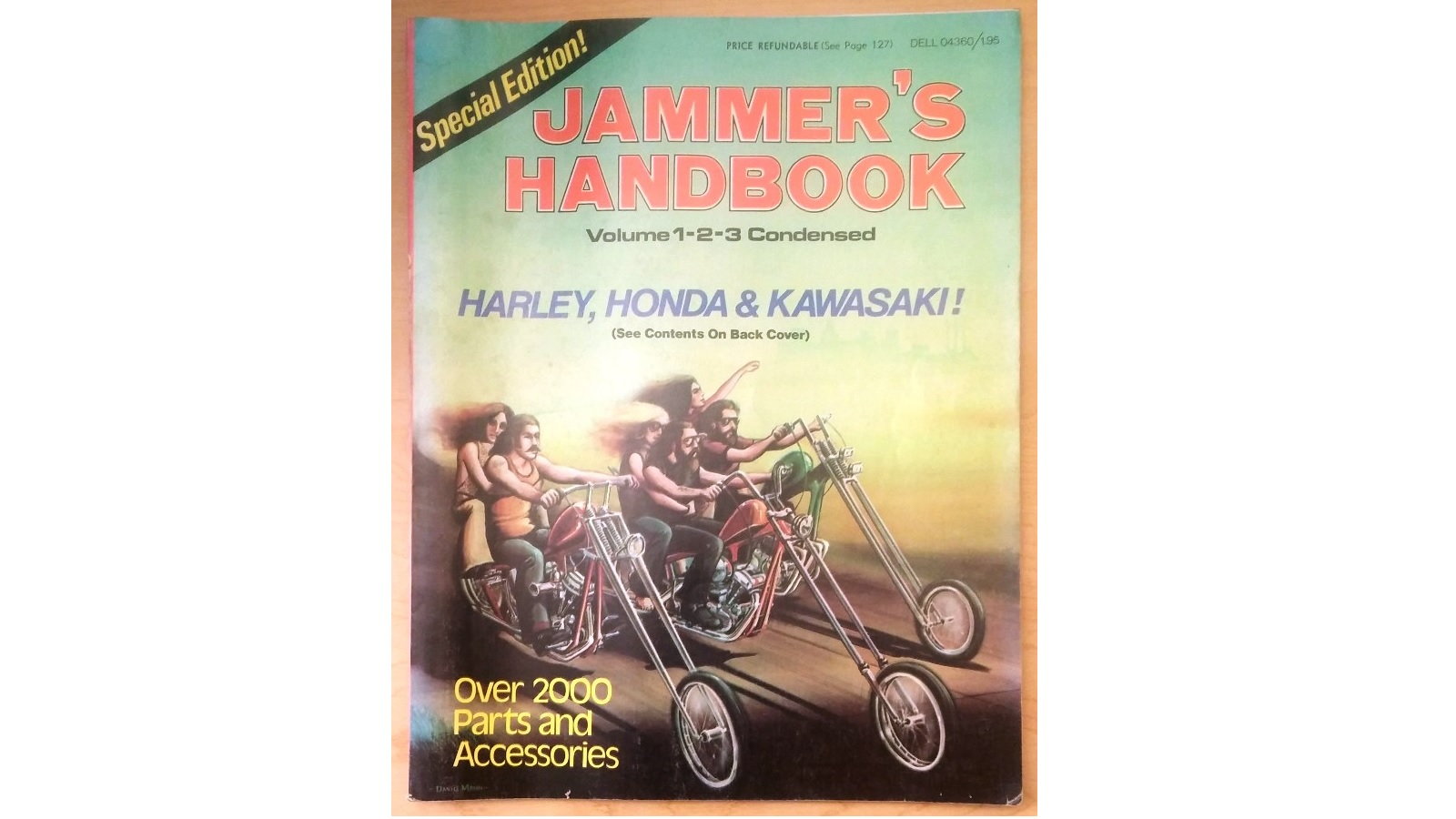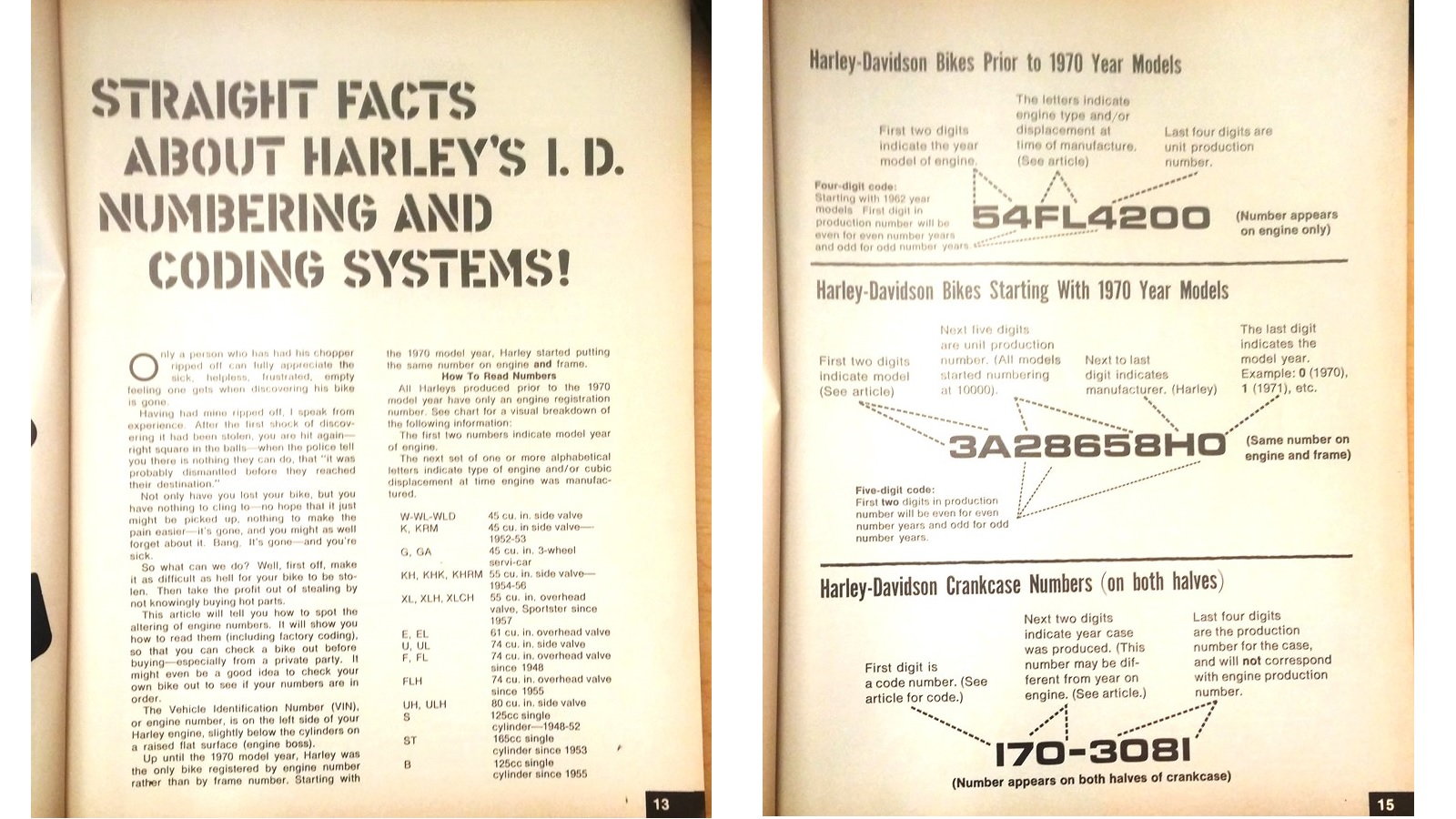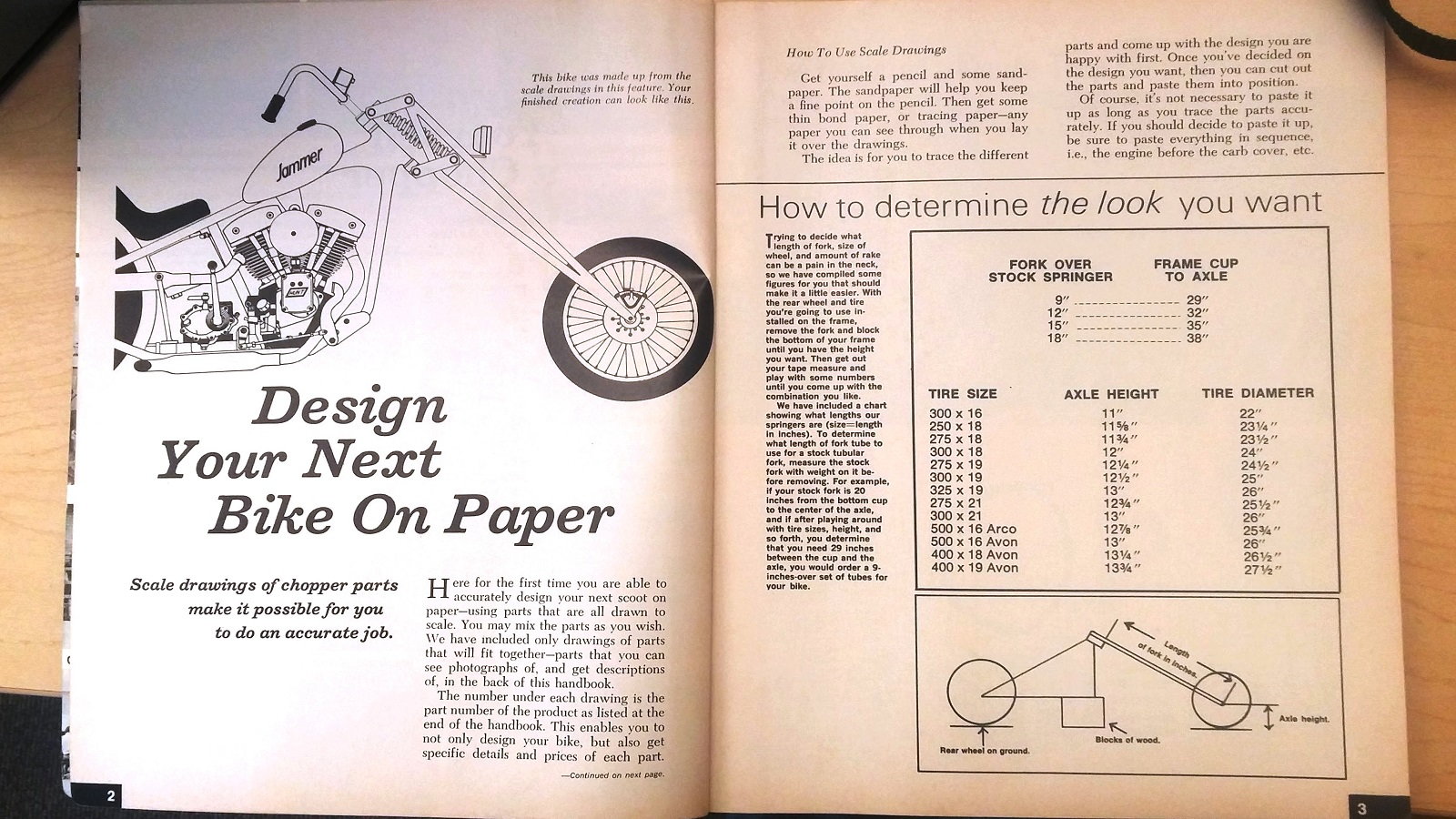12 Cool Things Learned from the 1977 Jammer's Handbook




























What is the Jammer's Handbook?
Back in the day, before internet forums, before eBay and Amazon, the Jammer's Handbook served as a combination mail order catalog, reference book, and how to manual for chopper enthusiasts. They were put out by Cycle Jammer Products of Burbank, CA, who developed and sold a huge assortment of their own products, plus a variety of other brands. These days they are part of Custom Chrome, and still have a huge number of parts. If you are looking to build an accurate old school chopper, you can find yourself a copy (ironically enough) on eBay or Amazon, where they sell for $20-40. Let's flip through the pages of this 1977 edition, which combined all the how-to and reference info from the first 3 handbooks into one condensed volume, along with the latest catalog.
1. Harley, Honda & Kawasaki - It's All Okay
Back in the day, when the Honda CB750 and the Kawasaki Z1/KZ900 had only just made the scene, there was not this huge divide between the Japanese bike crowd and the American bike crowd. In fact, reading this, it appears there was more of a rift between the chopper building/riding guys and the stock bike riders. Just look at that great David Mann cover, in big letters is shouts HARLEY, HONDA & KAWASAKI, not a little note in the corner embarrassed that they also have parts for Japanese bikes. Inside are not only parts for the newcomers, but also reference information, plus chopper pictures, too.
2. Decoding VIN Numbers
You old guys all knew that before 1970 Harley didn't bother to stamp their frames, right? Well, it was news to me. All those early Pans, Knuckles, and Flatheads just had an ID number stamped into the engine cases, and that was it. The Jammer Handbook has it all laid out for you to decode from the ID number just exactly what year and size motor you are looking at. The cases themselves have numbers on them to keep the halves matched up, and the year on those may be different than the model year, as stated on the VIN.
3. Pan Head vs. Knuckle Head Frames
If you are into old stuff, a lot of times you are still going to be combing swap meets, and the piles of cast off parts at the home of some parts hoarder. If you end up with a hard tail Knucklehead frame, and you try to mount a Panhead motor in it, you are going to be very disappointed. Thanks to the Jammer Handbook, I now know that the Panhead has a "triangular thingie" for a top mount, vs. the straight rectangular tab the Knuckle uses. The Panhead frame should also have a provision for a fork lock in the frame. The Jammer Handbook also features some great full color pictures of back in the day choppers, like Pat Ditson's Panhead.
4A. Design Your Next Chopper - Like a Paper Doll
When this handbook came out in 1977 there was no way to manipulate pictures and cut and paste in a computer. However, thanks to the copious scale drawing of their parts inside, you could cut and paste for real, and be able to see what your chopper was going to look like. Inside you will find scale representations of different lengths and styles of fork, and different sized wheels, different style seats, tanks, and exhausts. Why are scale drawings so important? Because for proper highway jamming it is important to have the right geometry, and you can measure rake and trail and adjust for it with scale drawings. Of course, for many builders, I'm sure these were just as useful to get the look right with paint, seat, tank, exhaust, etc. mock-ups. But, the handbook does stress the proper geometry and how to get it.
4B. Some of the Scale Parts
Warning - Now that I have taken pictures of the pictures, then manipulated and tweaked them with a computer, they may no longer be correctly scaled. You'll just have to get your own copy of the Jammer Handbook and use a photo copier.
5. Just How Simple Wiring Can Be
These R. Crumb cartoon-ish wiring diagrams are what got the Jammer's Handbook on my radar in the first place. For some reason, seeing the bike represented in this manner, with stylized versions of the horn, light, switches, distributor, etc. really make it easy to understand. This edition includes pretty much every possible Harley-Davidson configuration you can imagine, both big twin and Sportster, battery ignition or magneto.
6. Stroking it Properly
These days, guys just walk up to the parts and accessories counter and order a bigger motor, but back in the day you had to stroke it yourself. In order to get more power you would take your factory 74" motor, modify a set of flywheels from a 80" flathead motor, and build a stroker. The Jammer handbook gives you a whole rundown of how to stroke it, lighten the flywheels, add big valves, install a hot cam, and everything else you need to have a real powerful motor that will rip your arms off.
7. How to Run an Old School Springer with a Brake
If you have ever had a bike with a leading link front end (even something like a Honda Passport step-thru) you know that the front brake can cause weird sensations. An old school springer fork for a Harley-Davidson chopper was typically run without a front brake, but doing that in today's traffic is suicide. With this information you can mount a small drum, or disc, and have the forces feed into the stronger arm of the springer, and also minimize the rise many leading link set ups can do when you get on the brakes.
8. Pan vs. Shovel vs. Knucklehead motor
It is certainly not a definitive run down of the technical differences, but you do get a nice little visual comparison of all the major motors over the years. This includes the flatheads, the Sportster, and others.
9. Troubleshooting by Ear
This wasn't just an excuse to run a hot picture of a naughty nurse, you really can use a stethoscope to diagnose the motor. Different noises coming from different areas indicate different issues within your 74" motor. The next page digs deeper into common symptoms and their causes. If you are motr familiar with modern Evo or Twin cam motors, this would be a helpful introduction to the types of issue earlier bike suffer from.
10. Funk Tools Get the Job Done
When working on an engine long out of production, sometimes you need a tool that was once common, but not NLA. Thankfully, even when you could buy the tools, some folks just prefer to make their own. The Jammer Handbook gives you several pages of tools you can build yourself in your garage for specialty operations.
11. Pipes, Pipes, Pipes
Even back in 1977 the looks faction and the performance faction were fighting. The Jammer Handbook has dozens of exhaust pipes, both the twin, short, un-muffled kind, twin mufflers type, and the high performance two-into-one type. There are even equal length headers with a collector, for maximum performance. Also, in keeping with the non-judgmental attitude, they list 2 pages of pipes for Japanese bikes.
12. Hallcraft's Awesome Aftermarket Wheels
Hallcraft eight spoke Galaxy and Satellite wheels are really out of this world. The odd way the spoke alternate between a flat side and an knife edge toward the viewer gives them a unique look I have never seen before. It is hard to imagine how many choppers were rolling around out there with just a tiny drum brake out front to slow them down. Obviously anything is better than a plain spool hub with no brake. Besides, choppers are about going, not about stopping.
If you are into old school choppers, do yourself a favor and find a copy of the Jammer's Handbook.
The HD Forums have page after page of how-to tips, DIY maintenance information, and more for your late model bikes, so click over and check out our Harley How-To section.

